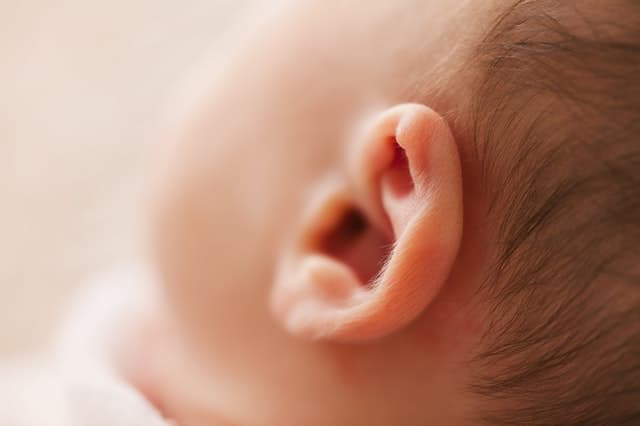If you’re like most people in Los Angeles, you probably don’t give your ears much thought unless you’re stabbing a hole through the lobe or covering them up when it’s cold.
The ears are surprisingly complex organs that collect and process sounds in the environment and send them to the brain for interpretation.
Think of the ears and brain as a classic duo along the lines of Butch Cassidy and the Sundance Kid!
Structures of the Ear

The external portion of the ear is rather unassuming (though a little more prominent in some folks than others).
It’s a handy place to display jewelry or hold a pair of glasses.
But the real excitement takes place below the surface.
The ear is made up of three sections: the outer ear, middle ear and inner ear.
All three play a unique and important role in the hearing process.
- The outer ear, also known as the auricle or pinna, is the external portion that is visible to others. It is responsible for collecting sound waves and funneling them into the ear canal. Once inside, they are amplified before reaching the eardrum, which vibrates when struck.
- The middle ear is made up of the auditory canal and eardrum. Sound waves cause the eardrum to vibrate, stimulating the ossicles – three small bones consisting of the malleus (hammer), incus (anvil) and stapes (stirrup). The stapes is attached to the oval window, a membrane-covered opening that connects the middle and inner ears.
- The inner ear contains the cochlea, a structure resembling a snail shell that is divided into three fluid-filled parts. Vibrations from the eardrum stimulate movement of tiny hair cells known as stereocilia, which converts these vibrations into electrical impulses that travel through the auditory nerve to the brain, where they are translated into recognizable sound.
That’s how we hear! It’s a pretty remarkable process, huh?
Now that you know how hearing works, let’s explore why it sometimes doesn’t work.
Understanding Hearing Loss
Damage to any of the sections of the ear can result in hearing loss.
When the outer ear or middle ear are affected, conductive hearing loss may result.
This is often caused by trauma, disease or certain medications. Conductive hearing loss is often temporary and/or correctable with surgery or drugs.
Sensorineural hearing loss, or nerve deafness, occurs when there is damage to the inner ear.
This type of hearing loss is permanent but usually treatable with hearing aids.
Nine out of 10 patients with hearing loss in Los Angeles are diagnosed with this type.
Some people experience damage to both the inner and middle or outer ears. This is known as mixed hearing loss.
If you or a loved one is experiencing hearing impairment in Los Angeles, schedule an appointment with an audiologist for a hearing screening. There are solutions available to improve your quality of life.
Related Hearing Aids Posts:
House Providence Hearing Health Center
2100 West 3rd Street, Los Angeles, CA 90057
(213) 483-9930
https://houseinstitute2.fm1.dev